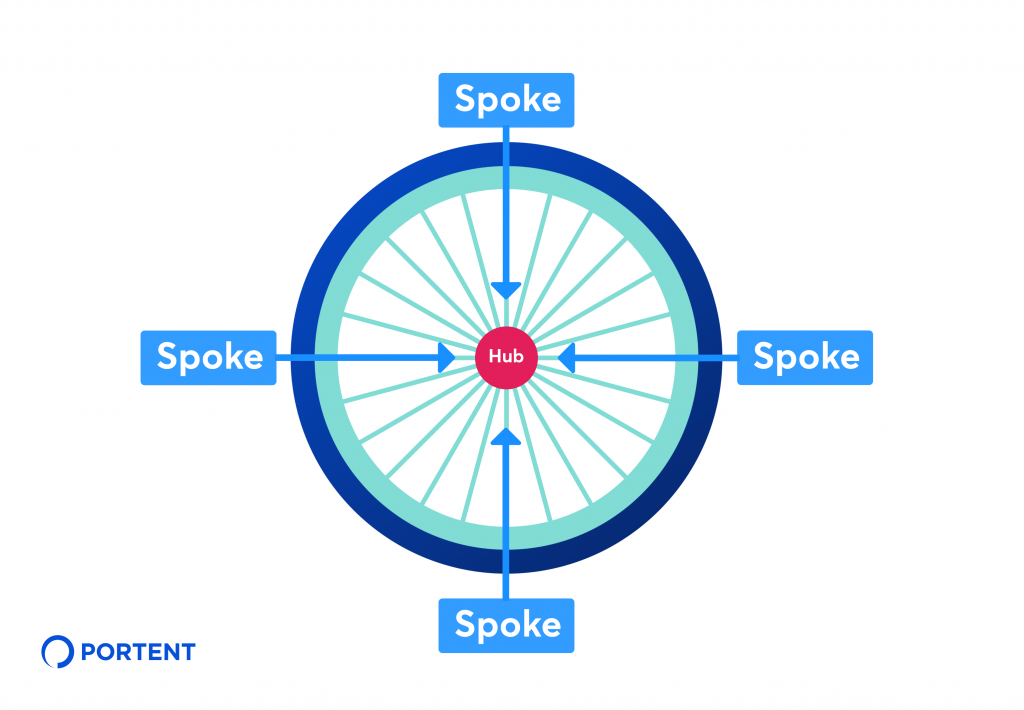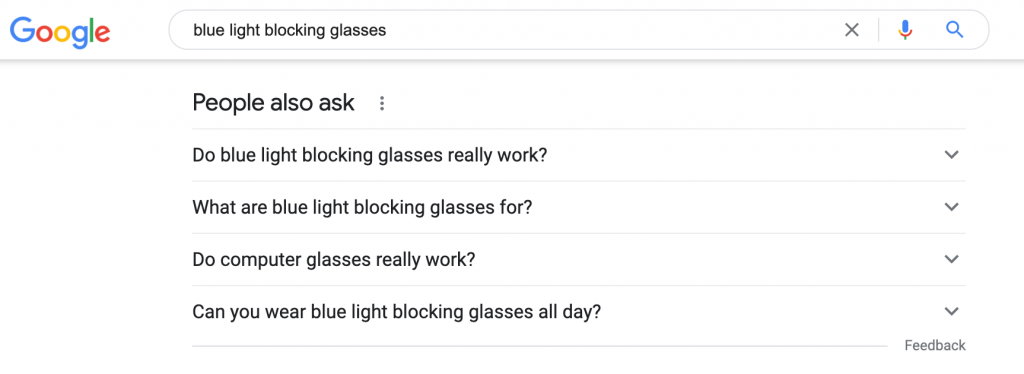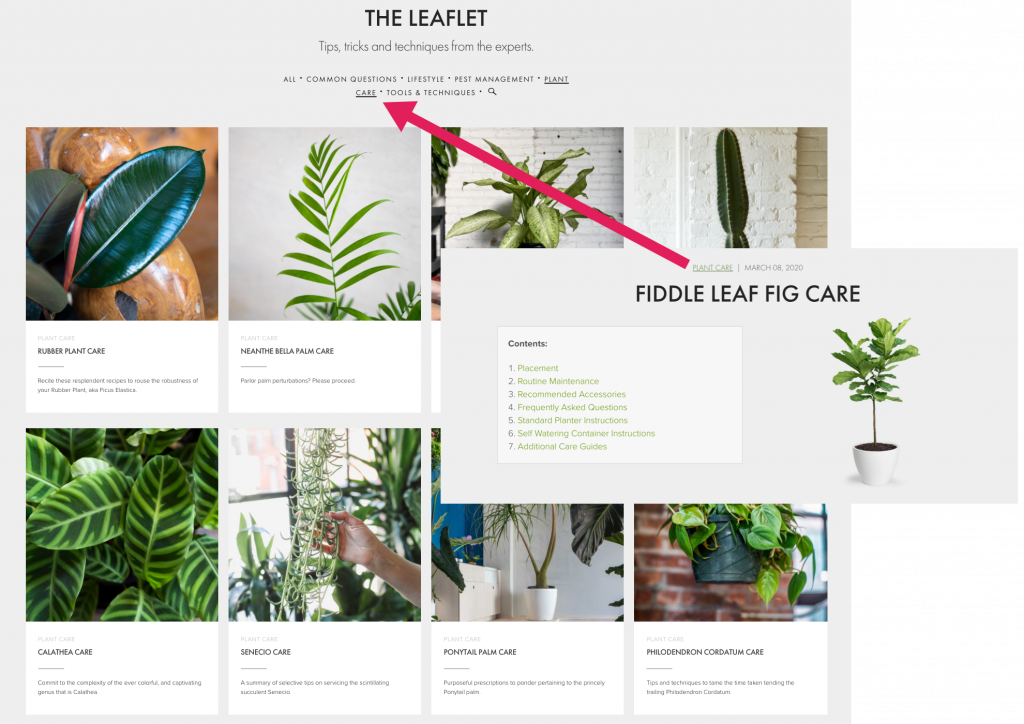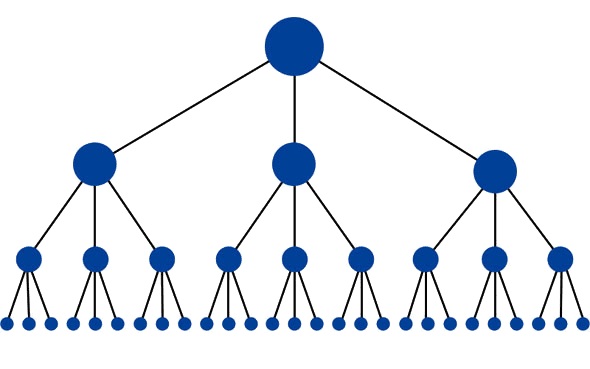If you’re looking to build topical authority in your subject area, there’s no better way to accomplish this than by creating a content hub (just check out the impact in our topical authority case study).
Whether you’re just starting out or looking to increase the value of your existing content, you should always be thinking about the broader strategy and how individual pages tie into the rest of the content ecosystem.
Users and search engines alike prefer well-organized content – interlinking individual content pieces into a hub-like structure is a great way to create hierarchy and improve wayfinding. And while search engines answer our search queries at a page level, it’s no secret that Google cares about how the content is organized.
So what exactly is a content hub, and how does it work? Let’s dive in!
What is a Content Hub?
A content hub is an internal linking strategy that involves linking several pages of related content (sometimes referred to as “spoke” pages) back to a central hub page.

Content hubs work by driving link authority and topical relevance from the spoke pages into the hub page. By concentrating internal linking onto one page, you improve that page’s ability to rank in search. There are several types of content hubs you can choose from – check out our blog post on 6 content hub examples and how to choose the right one for your needs.
Why are Content Hubs Effective?
If you want to grow your keyword rankings and improve topical authority, creating a content hub can help.
Content hubs are an excellent way to surface content that might otherwise be buried in your site architecture. If, for example, bicycle helmets are one of the main items you sell, you may consider placing a link to the hub in your website’s navigation. Doing so will send signals to Google that you’re an authority on the topic because you’ll have a link to “bicycle helmets” on every single page of your site.
Search engines look at link text, the number of links, and the position of links on the page. Then, they’ll crawl your site and say, “This helmet page is really important.” If your site has this navigation, and your competitors still have plain old “products” and “services” up top, guess who wins? You!
To see just how effective a content hub can be, check out this content hub case study we put together on one of our clients.
How to Create a Content Hub
Content hub development is relatively simple. All you have to do is get good at organizing content and identifying topical gaps. Once you get the hang of it, it won’t be long before hub opportunities start to appear right before your eyes.
And when you move on to the next content idea, you’ll find yourself thinking about the topic beyond the one you’re working on (e.g., what will come next and how that will impact the overall organization and content architecture).
While there are many ways to approach content hub development, the steps you’ll go through to come up with your hub strategy will be the same.
Step 1. Align Hub Topic with Your Expertise
Think about the topics you want to be known for within your industry. To get started, you should aim for 3-5 “wish list” ideas.
For example, if you sell indoor plants, you’ll want to position yourself as an expert in all things plant care (e.g., create content around how much water and light a plant may need, when to re-pot it, etc.).
If you offer doggie daycare services, you’ll want to show off your expertise around the different dog breeds (e.g., create content around temperament, grooming, training, health, etc.).
Once you’ve narrowed down a few topics that you want to be known for, take a look at your existing content to learn just how much of a gap you have yet to fill.
Step 2. Review Your Existing Content
If you already have a blog, resource pages, white papers, etc., you have content. Instead of starting your content hub from scratch, see if you can first borrow or steal content from other sections of your website.
A straightforward approach to organizing your existing content is by creating category tags. Once you go through and tag all of your existing content, you can start organizing your content by different themes. This is also a great way to understand what content you can build on, what you can reuse, and what gaps you’ll need to fill with your content hub development plan.
To complete this step, you shouldn’t need to do an intensive content audit – a simple list of your website landing pages should suffice! However, if you have a large website and don’t know where to start, consider doing a manual Google search to gather existing content on a specific topic.
For example, if you’re a tea company looking to build out a hub on “matcha,” consider doing a site search to learn what other content you already have on this topic:

Step 3. Conduct Keyword Research
Now that you know what content you have to work with, it’s time to uncover additional opportunities. To learn what users are searching for, we must conduct keyword research.
For this part, we rely on tools like Ahrefs, SEMrush, and Moz to get a deeper understanding of our end-user. Keyword research tools help us identify keyword opportunities with ranking potential, so we can determine if we have a chance of ranking for a given keyword.
However, if keyword research tools are not available to you, there are other means of mining for commonly used keywords – you can use Google’s autocomplete to determine different sub-topics that users may be interested in. For example, if you’re building a content hub around “best sleeping bags for camping,” you may consider creating a spoke dedicated to different camping seasons:

Step 4. Answer User Questions
If you don’t have access to keyword research tools, this step will be all the more critical.
Leverage free tools like Google’s People Also Ask, Answer to the Public, or Use Topic to determine what questions users are asking.
For example, say you’re looking to build out a hub on blue light blocking computer glasses; you need to answer all questions related to this topic. By doing a quick Google search, you can gain a pretty good understanding of what questions users care about the most:

Step 5. Pay Attention to Your Search Competition
Learn from your search competitors and find opportunities to leverage their strategies.
While you’re conducting keyword research, looking at frequently asked user questions, and so on, pay attention to search competitors that are showing up in spots one through three of your organic search results.
When you come across a content piece that aligns well with your user, carefully examine your search competitor by diving deep into their strategy.
For example, if you’re an online plant store looking to build a small hub on “Fiddle-Leaf Tree Care,” don’t stop your competitor analysis at the first article you land on. Instead, take a deeper look at your competitors’ breadcrumbs and explore what other similar content they’ve created. You never know what kind of gems you may find along the way:

Step 6. Create a Plan to Fill Content Gaps
At this point, you should have a clear vision of the gaps you need to fill. But before you dive into content development, spend some time creating a plan. Remember that at its core, a content hub is a clearly defined internal linking strategy.

Since it will likely take time to create all of the content, you’ll want to think about which pages to create and publish first. And while you could technically wait to publish all of your hub content in one swoop, we recommend getting the main hub page (a landing page that will include all of the hub links) published first. This prioritization is important for two reasons:
- It takes time for search engines to crawl and index new content. By launching the main hub page first, you’re giving them a head start.
- Every one of your spokes will need to link back to the main hub page. If the main hub is already live, you won’t have to replace your placeholder links with the live URL.
Once your main hub page is up and running, the publishing cadence for the spokes should be prioritized based on the overall opportunity (referencing keyword search volume here can be very helpful). However, at the end of the day, your hub should cover all of the topical bases – so no matter what content you choose to put out first, just remember that your final hub should do a stellar job of answering any user questions on the topic.
Now that you know the basics of building a content hub, we can’t wait to see you put this plan into action. Take a stab at the process and let us know what worked or didn’t work for you!









